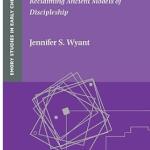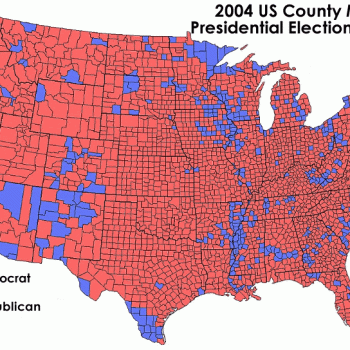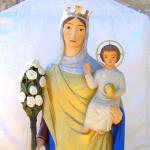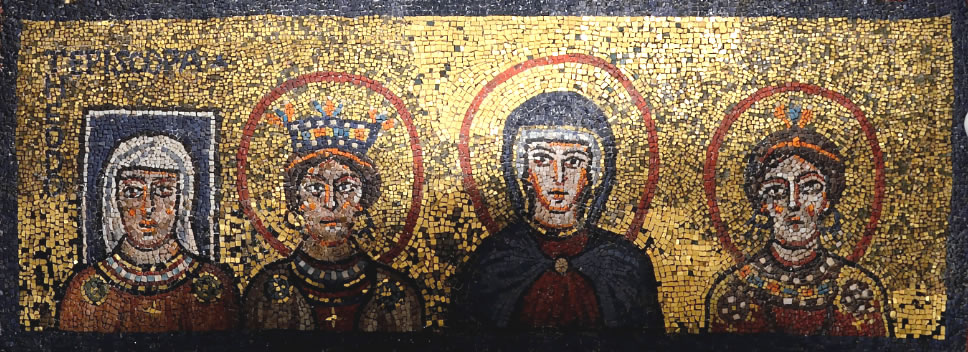
In this article Women in Early Christianity, I want to show how women in problematic early movements appear to have changed how women were allowed to serve. I will offer evidence that points to a probable historical context and timeframe for when NT MSS were changed and the church began to limit the roles of women. [-1-]
We opened this series with an article showing how women followed Jesus.
Jesus broke the rules, allowing women to touch Him, touching women…and allowing women to follow Him along with the men.
Next, we looked at the apostle Paul, both in Acts and in his letters. Paul followed the example of Jesus, allowing women to be in his team using them in various leadership positions.
We then looked at the problematic verses in 1 Cor 14 about women being “silent” in church. The evidence is solid that these verses were added to the manuscript tradition.
The question is: When did this happen?
Women in Problematic Second Century Movements:
Marcionism
In the late 130’s Marcion comes to Rome.
It appears that his father was a bishop in Sinope (modern-day Turkey).
Marcion arrived and gifted the church with around $1M (in today’s currency).
This large gift (eventually returned to him by the church) likely gave him access to quickly become influential. It also helped to have a father who was a bishop.
In the next 2-3 years Marcion was teaching doctrines that were not accepted. When confronted he refused to back down and in 144 AD he was excommunicated.
Marcion mixed Gnostic teachings into the church doctrine. His teaching included:
– rejection of the Old Testament
– the “god” of the OT was basically evil…thus,
– he rejected almost everything Jewish
– Paul alone correctly understood the “new” covenant of Jesus
– only Luke’s gospel (considered Pauline) was acceptable
– only Pauline letters were inspired [and he edited out several verses here and there when he considered them to have been added later – anywhere Paul said anything positive about the “law of Moses.”
Marcion is exceedingly important because he is the first writer who draws up a list of “inspired” writings. Marcion’s errors and his list is partly what led the church to begin clearly stating there were “four” approved gospels and not more.
Marcion had a very low view of sex, even in marriage. Along with other aspects of his teaching, this reflects his Gnostic leanings.
Following Paul’s model…Marcion welcomed women into his churches. He had virgin women and widows who were leaders…and preachers.
During his lifetime, Marcion established at least a few hundred churches. Marcionite churches were still in existence 300 years later.
Marcellina the Gnostic
Around 155-168 AD a woman named Marcellina came to Rome to propagate a version of Gnosticism. We learn of this woman through Ireneaus of Lyons in his work Against the Heresies and through comments made by Origen in Against Celsus. As with other Gnostic groups, she appears to have held to a libertine ethic – sensual desires were not discouraged, but were somehow affirmed.
Montanism
Around 172 AD a man named Montanus comes on the scene in modern day Turkey.
This was a movement quite different from Marcion.
Montanus and his followers had experienced the charismata – falling into something like a trance…speaking in tongues…and prophesying. The gifts of the Holy Spirit were still happening, especially prophecy. Many people in local churches welcomed Montanus and his message.
Montanus had two women who traveled with him…Priscilla and Maximilla. Both were prophets. Their teaching was that a “New Spirit” had come to lead the church…and it has bypassed the bishops [kind of like how Jesus bypassed the Pharisees].
They taught and prophesied that Jesus was about to return…SOON. Like Marcion, the Montanists also held sexual abstinence as a sign of great spirituality. Even married couples in their movement were encouraged to abstain…which goes against the teachings of Paul.
This is a bit like Gnosticism as well.
This movement was rejected, not because of their doctrinal views, nor because of their focus on charismata, but because they refused to submit to the leadership of the bishops. There was also complaints about how the women “chattered in a frenzy” and were given a status higher than the apostles. Given this time period, it also sounds a bit like a bias against women with strong personalities. [-2-]
The Church Circles the Wagons
It appears to me that things began to change in primitive Christianity towards the end of the second century before most churches/clergy had collections of NT writings. The texts were out there, but few church leaders would have more than a few copies of NT writings.
Because of the threat of Gnosticism (and movements like Marcion and Montanus)…a fear that women might have too much influence apparently pushed some leaders to focus on ways to set limits to what the women in the Church were allowed to do.
Women Shall Keep Silent
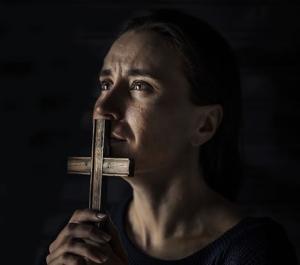
The first literary mention of “women being silent in church” (referring to 1 Cor 14:34-35) by any early Christian writer is around 206 AD by Tertullian. Interestingly, Tertullian, the great Christian writer (formally trained as a lawyer) ended up joining the Montanists around a dozen years after he writes On Baptism. [-3-]
In my prior article “Are Women Supposed To Be Silent In Church?” I presented the evidence of how the earliest MSS must have been edited.
Theory of a Change in the Early Church
There seems to be clear evidence of when this change must have happened:
1. The lack of any reference in the early church writers prior to Tertullian for women to remain “silent” or “quiet” in church around 206 AD.
2. The use of women in the two earliest “heretical” or “heterodox” movements (Marcion and Montanus), both dating earlier than 180 AD.
3. The threat of Gnosticism in general and Marcellina as a female “Gnostic” leader specifically.
AND,
4. The evidence that one of the earliest MSS families (Western “D” or Codex Bezae) was clearly edited to be less “women friendly.” [-4-]
The evidence points to the early Western MSS being edited to be less “women friendly” after the 180’s and prior to Tertullian. The excellent 1998 article (cited in note 4) by Gilles Quispel certainly points in this direction:
“The text of Luke’s Acts of the Apostles was so heavily edited that its Western revision amounts to a second, revised edition. Only the Apocalypse of John and the so-called Pastoral Letters of James, Peter, and John escaped the hands of Western correctors, which all must have done their work after Marcion (? 144 C.E.), and before the end of the second century…” Quispel, ibid. p.357
It appears that after experiencing the struggle for “orthodoxy” with these “sects,” the church made a strategic move to drastically limit the leadership roles of women.
The focus of this article is not on Marcion, Marcellina or Montanus. My focus is how these problematic “sects” are part of the evidence pointing to a change in how the church treated women.
The Church started to shy away from the example of women who followed Jesus…
and those who worked with Paul…
and began to edit NT MSS to keep women silent.
It appears this change started in earnest somewhere between 180 to 200 AD.
We need more scholars to present more evidence on either side of this debate.
Notes:
I apologize for lengthy pause in this article series. I am teaching two classes at the local university this semester and my time has been more limited.
1. For more on Montanism see Wright, David, “Why Were the Montanists Condemned?”, Themelios 2:1, pp.15-22. See this article online: https://www.earlychurch.org.uk/article_montanists_wright.html
2. On Baptism 17: “For how credible would it seem, that he who has not permitted a woman even to learn with over-boldness, should give a female the power of teaching and of baptizing! “Let them be silent,” he says, “and at home consult their own husbands.” This appears to be a citation from 1 Cor 14:34-35. [https://ccel.org/ccel/tertullian/baptism/anf03.vi.iii.xvii.html]
3. Witherington, Ben. “The Anti-Feminist Tendencies of the ‘Western’ Text in Acts.” Journal of Biblical Literature, vol. 103, no. 1, 1984, pp. 82–84; Kurek-Chomycz, Dominika A. “Is There an ‘Anti-Priscan’ Tendency in the Manuscripts? Some Textual Problems with Prisca and Aquila.” JBL 125, no. 1 (2006): pp.107–28.
Add to these studies an excellent study by Gilles Quispel which points to solid evidence that Marcion’s text of Paul was the Western “D” text-type: Quispel, Gilles, “Marcion and the Text of the New Testament,” VC, Vol. 52, No. 4 (Nov., 1998), pp. 349-360. “…it is not a priori completely impossible that even at this early date (before 144 C.E.), doctrinal corrections had been introduced into this pre-Western text of Paul’s letters,” p.352.
4. I have given very brief and simplistic summaries of these three early “Christians.” Many scholarly studies have questioned these three individuals and the resulting movements. A simplistic summary is never to be fully trusted as historically accurate. Marcion is a bit more clear, but good scholars have challenged the labels given to Marcellina and Montanus.
About the Author

Al Baker has served 20+ years as a pastor (university pastor and local church), was an adjunct then an associate professor of Philosophy and Religion at Saint Augustine’s University in Raleigh NC for six years.
After serving as the university pastor of Chi Alpha (Assemblies of God) at the University of Alabama for 11 years, he moved his family to St Andrews, Scotland. In 2001 Al Baker completed a Ph.D. in Early Church History at the University of St Andrews.
In 2005 he started churchhistory101.com, surpassing 1 million unique visitors in 2016. On that site there are several articles on different aspects of early Christianity and two PDF eBooks you can download. Read more.



